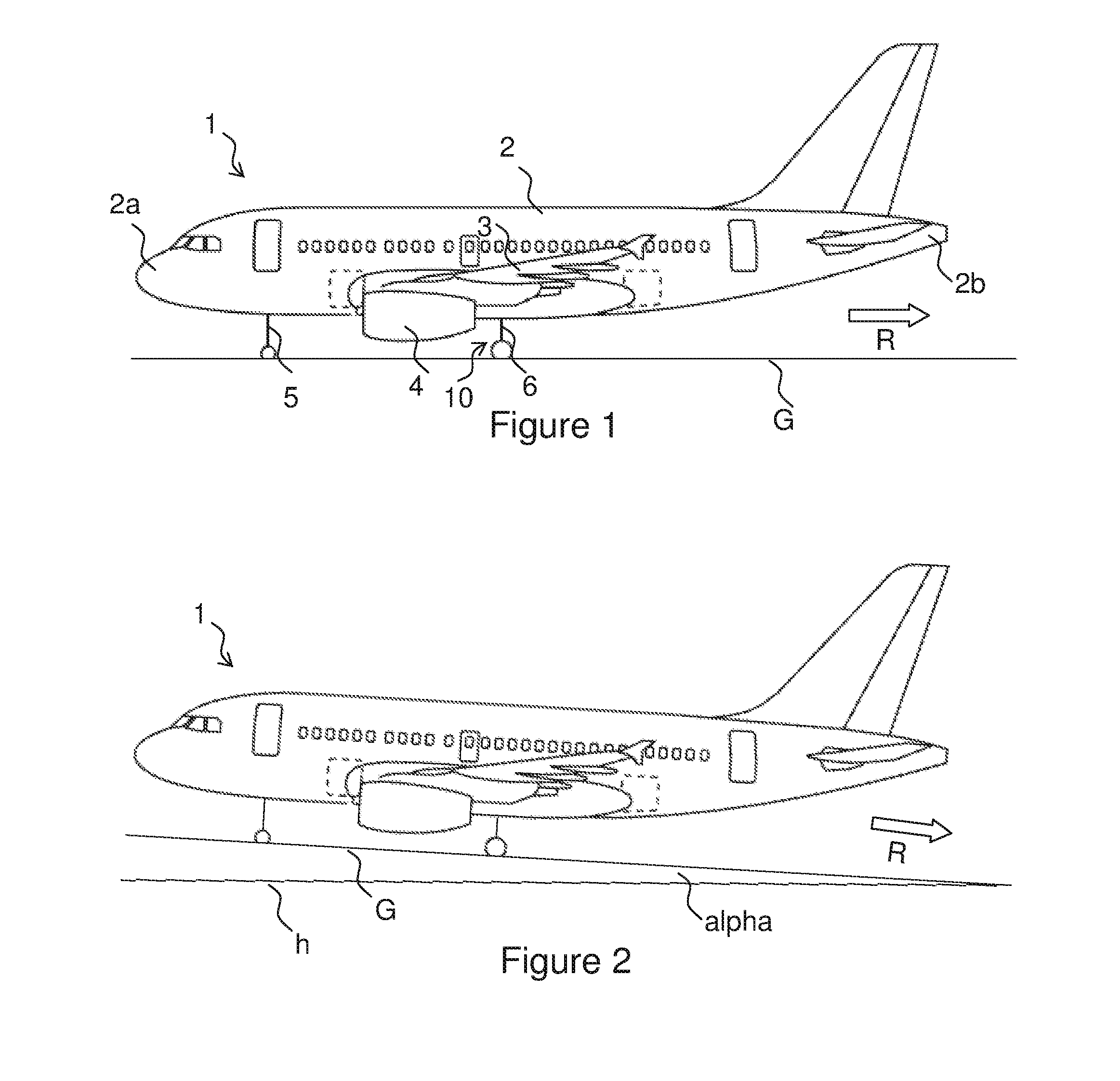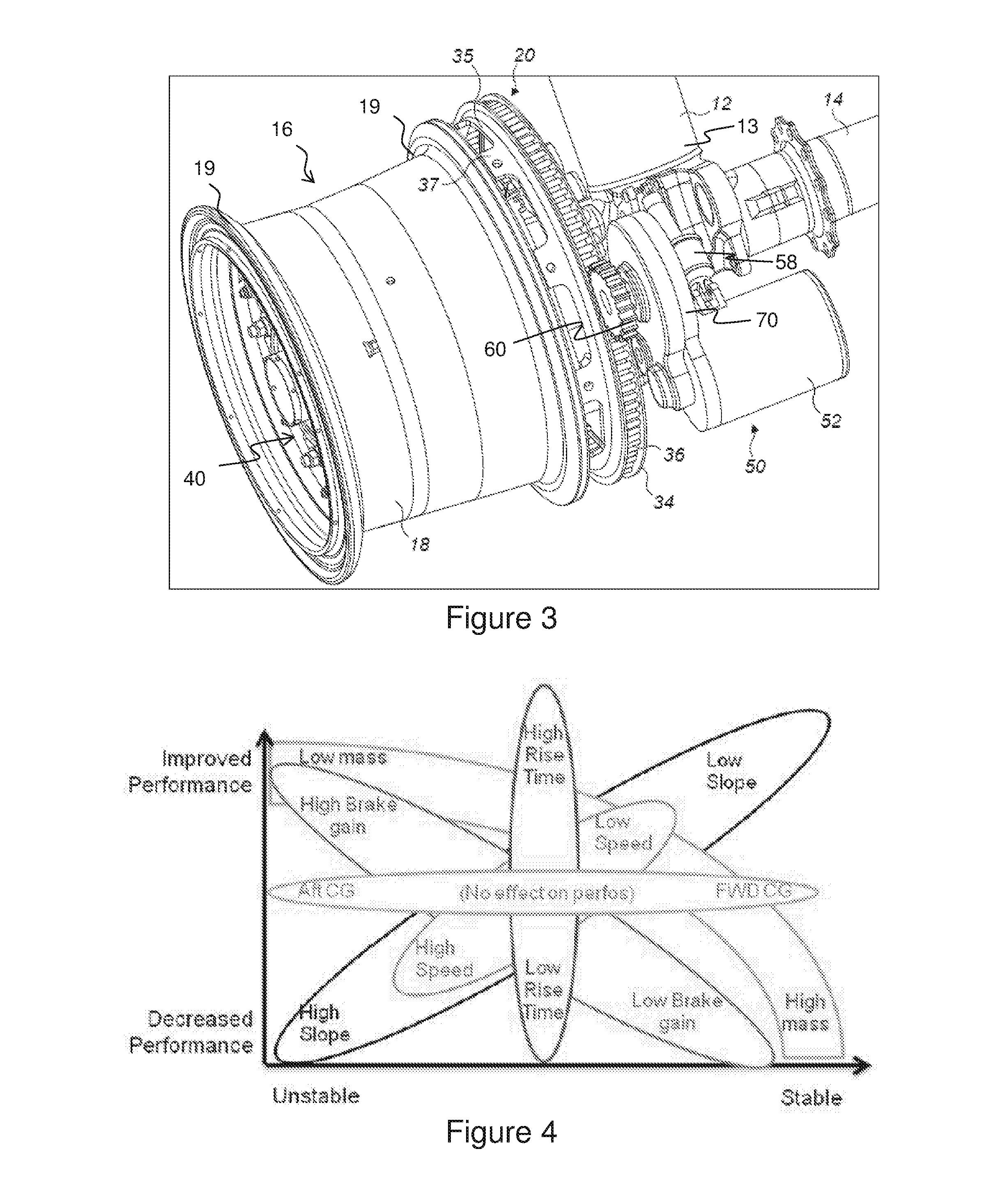Aircraft autonomous pushback
a technology of autonomous pushback and aircraft, which is applied in the direction of energy-saving operation measures, aircraft braking arrangements, wheel arrangements, etc., can solve the problems of not being able to use brake pedals, damaging nose landing gear and tractor, and not being able to operate civil aircra
- Summary
- Abstract
- Description
- Claims
- Application Information
AI Technical Summary
Benefits of technology
Problems solved by technology
Method used
Image
Examples
Embodiment Construction
)
[0035]FIG. 1 shows an aircraft 1 having a fuselage 2 including a nose 2a and a tail 2b, wings 3, main engines 4, nose landing gear 5 and main landing gear 6. The aircraft has two main landing gears 6, one on either side of the aircraft centreline, and a single nose landing gear 5 forming a tripod. Each landing gear 5, 6 has a diablo configuration with two wheels.
[0036]The aircraft 1 is typical of a short range single aisle passenger jet aircraft, although it will be appreciated that the invention has applicability to a wide variety of aircraft types as mentioned above. In particular the aircraft may have a greater or fewer number of landing gears; and each landing gear may have any number of wheels, including one.
[0037]Each main landing gear 6 has a wheel drive system 10, shown in detail in FIG. 3. The wheel drive system 10 is for driving one wheel of the main landing gear 6 (typically the outboard wheel but may alternatively be the inboard wheel) in rotation to taxi the aircraft o...
PUM
 Login to View More
Login to View More Abstract
Description
Claims
Application Information
 Login to View More
Login to View More - R&D
- Intellectual Property
- Life Sciences
- Materials
- Tech Scout
- Unparalleled Data Quality
- Higher Quality Content
- 60% Fewer Hallucinations
Browse by: Latest US Patents, China's latest patents, Technical Efficacy Thesaurus, Application Domain, Technology Topic, Popular Technical Reports.
© 2025 PatSnap. All rights reserved.Legal|Privacy policy|Modern Slavery Act Transparency Statement|Sitemap|About US| Contact US: help@patsnap.com



